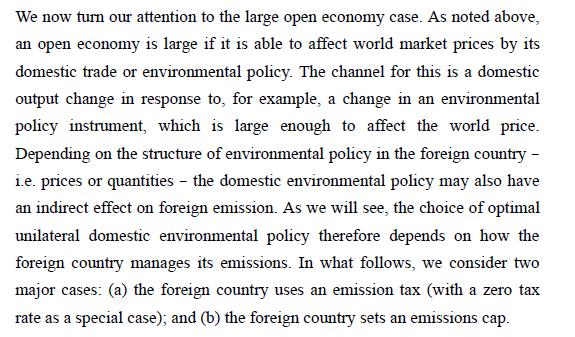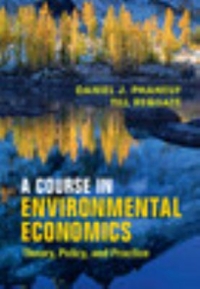Extend the model from section 12.4 by assuming that there are J (not necessarily symmetric) domestic and
Question:
Extend the model from section 12.4 by assuming that there are J (not necessarily symmetric) domestic and Jf (not necessarily symmetric) foreign firms.
(a) Derive the unilaterally optimal emission tax formula for this case.
Assume that both countries issue tradable permits, and that the permit markets of the two countries are separate.
(b) Set up the equation system that describes the world market equilibrium.
(c) Derive a formula for the optimal quantity of permits to be issued domestically.
Assume now that the pollutant is homogeneous and an international emission trading system is implemented.
(d) Set up the equation system that describes the world market equilibrium.
(e) Derive a formula for the totally optimal quantity of permits to be issued worldwide.
(f) Assume now that the pollutant is homogeneous, but permit markets are separate. Assume again there is only one representative firm in each country. Determine the optimal domestic response when the foreign government relaxes its environmental policy (i.e. if the foreign number of permits increases).
(g) Assume again both countries charge emission taxes. Determine the optimal domestic response to a foreign emission tax increase.
Data from section 12.4

Step by Step Answer:

A Course In Environmental Economics
ISBN: 9781316866818
1st Edition
Authors: Daniel J Phaneuf, Till Requate





